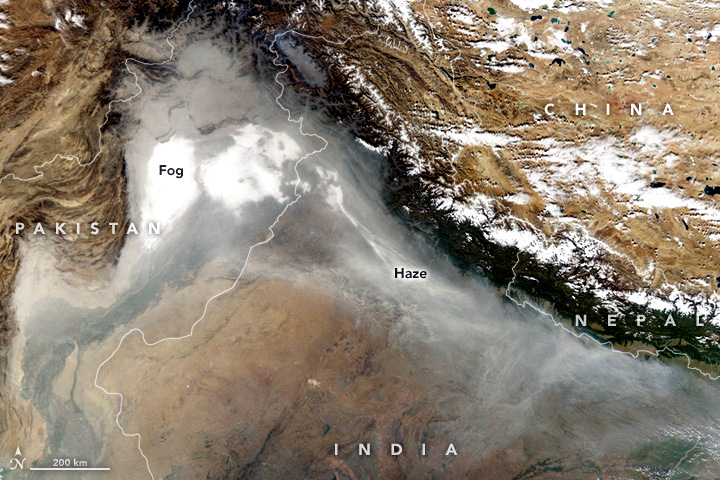India's 'Gas Chamber' Smog
Toxic fog smothers north India, November 7, 2017 (credit: NASA)
In late 2017, North India has been covered for more than a week in a toxic shroud of smog so bad airlines chose not to land in the Indian capitol, New Delhi. The smog stretched in a broad bands west into Pakistan and eastward into southern Nepal. The smog was dubbed a 'gas chamber' of air pollution caused by a combination of foggy weather, smoke from illegal crop-residue fires mixed with dust, and industrial pollution that created the thick haze. Measurements of microscopic particulate matter, based on the US Environmental Protection Agency's Air Quality Index or PM-2.5 scale, was 100 times above the upper limit considered safe to breathe. New Delhi hospitals were inundated with gasping air pollution victims.
The Moderate Resolution Imaging Spectroradiometer or MODIS instrument on NASA's Aqua remote sensing satellite, captured the extent of the smog coverage over South Asia that November. Environmental monitoring satellites are now essential to both gather data for climate change models and help in weather predictions. The high-flying Earth monitoring satellites don't help the Indians being smothered with the smog and air pollution problems on the ground. WHB
Toxic Smog, Northern India & South Asia, 11-7-2017 (credit: NASA's Aqua program)
